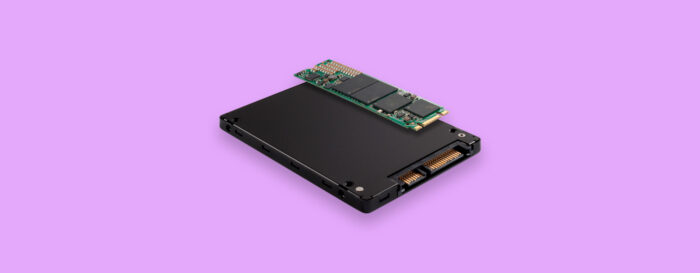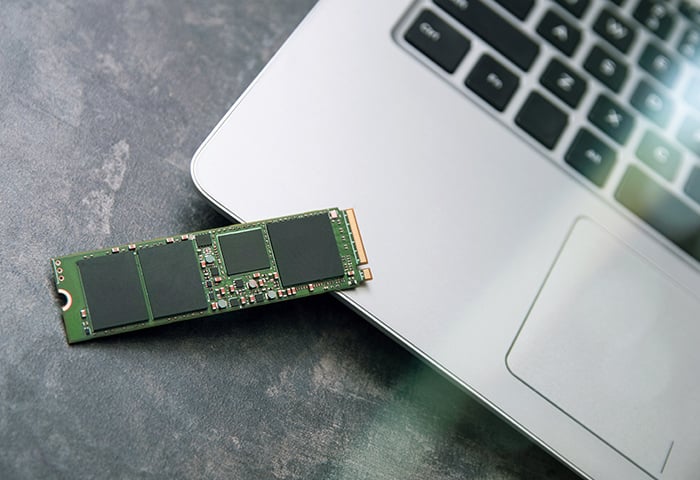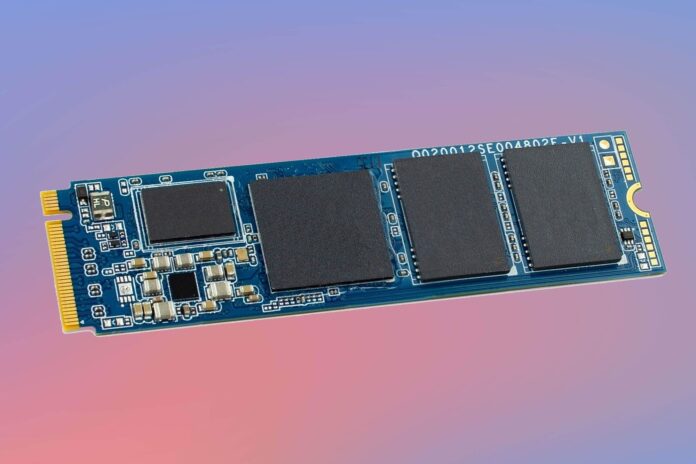You’re ready to access your SSD data, but instead, you’re met with a blank screen. Frustration mounts as you can’t figure out why it’s not showing up.
Fortunately, this issue tends to be fairly easy to fix with the right tools and knowledge. In this guide, we will discuss some of the common causes of SSDs not showing up and provide instructions on how to diagnose and troubleshoot them. With these simple steps, you should be able to get your SSD up and running again in no time!
Reasons for SSD Not Showing Up

It is possible that your SSD is not being detected by your computer if its driver or system files are outdated, missing, or corrupted. It may also be due to the fact that the drive may be defective, unpartitioned, not enabled in BIOS, experiencing power issues, or partition malfunctions. If the drive is partitioned and formatted the wrong way, there could also be an issue with compatibility with your system’s operating system. If you manage to restore it, but it lost the data, recovering it with software like Stellar Data Recovery Professional for Windows is definitely the first step you should take.
Checking BIOS Settings
Checking the BIOS settings of your computer can help you determine why your SSD is not showing up. To access the BIOS settings, restart your computer, and press the correct function key or key sequence to enter Setup, usually when the initial start-up screen appears.
Within the Setup menu, you need to identify and select the advanced features that allow you to manipulate hard disks as some computers may have limitations on their hardware configuration.
Once in BIOS settings, navigate through each tab or page in order to review disk information, status, and performance. If required by your system’s setup parameters, check whether the disk controller is enabled — if it is not enabled all devices detected by this controller will be ignored or unavailable.
Conversely, examine any relevant jumper and/or I/O configuration settings for proper mapping with associated HDD drives on one side and optical drives on another — the inaccurate setting of these parameters may cause identified HDD devices not to appear as available targets for formatting or use in partitioning programs.
Checking Disk Management

This will tell you if the drive is visible in Windows, and if it is, what drive letter it has been assigned. The Disk Management program can be accessed by right-clicking on My Computer/This PC and selecting Manage. In the Computer Management window, choose Disk Management from the left pane.
Look at the list of drives on your system – look for any items marked “unknown device” or “unallocated space”. If you see either of these items, then your SSD is likely visible in Windows but hasn’t been properly formatted or set up yet. In this case, right-click on one of these items and select “Initialize Disk” to get started formatting your SSD drive.
If you don’t see anything about an unknown device or unallocated space, then try restarting your computer – sometimes when a new hard drive is connected it doesn’t appear in Windows until after a restart has occurred. Try this first before taking any other steps to fix the issue.
Using Disk Partition Utility
Using the Disk Partition Utility is a straightforward way to make sure that your Solid State Drive (SSD) is visible to other devices. In order to do this, you will need access to a computer with administrative privileges.
First, open the Disk Partition Utility by going to Start > Control Panel > Administrative Tools > Computer Management. Once the Computer Management window opens, click on Storage in the left panel. This will bring up two menus — one for Disks and one for Volumes. In order to get your SSD detected by other devices, you must select it from the Disks menu (it will be listed as “NSY_001” for example).
Once your SSD is selected, click on Initialize Disk on the top toolbar. A dialog box should appear prompting you for an initialization type; make sure MBR (Master Boot Record) is selected and press OK to continue.
In order for your SSD to work properly, you must create a partition in it. To do this, right-click on Undo Partition in the Volumes menu and select Create Primary Partition from the drop-down menu; set the size of the partition and select NTFS as its file system type before clicking Next and Finish when prompted with confirmation dialog boxes.
Once these steps are completed, your SSD should now be visible in Windows Explorer or any other device capable of mounting removable drives!
Reinstalling Operating System

Before attempting this cycle, make sure you have a recent backup of all of your important data, as reinstalling the OS will result in the erasure of all stored information and applications on that partition.
If you want to proceed with reinstalling the operating system, start by booting into BIOS using the appropriate function keys – usually Esc, F2, or F10 – depending on your computer’s make and model. Next, select “Removable Devices” and set it to “Enabled” or “On”. Save settings and restart your computer.
Once you’ve successfully restarted it, insert a bootable USB drive with the valid installation image of your operating system. Restart again and press either Esc or F12 to select the one-time boot option for removable devices if required by your laptop’s brand or model number. Confirm that you have selected the USB drive as a boot device if asked during the startup procedure by pressing any key then follow installation instructions from that point forward.
Once complete, check whether SSD is now visible within BIOS settings since this was likely caused by incompatibility issues between SSD hardware/configuration and the previous version of the operating system installed on the laptop/desktop prior to the re-installation cycle.
Conclusion
In conclusion, if your SSD is not showing up, there are a variety of ways to diagnose and troubleshoot the issue. If you’re using an older version of Windows, consider updating it to ensure the OS is compatible with your storage device.
It’s also a good idea to check your BIOS settings for any possible issues like SATA mode selection or other incompatible settings. Additionally, you may need to check for any driver updates for your SSD as well as check for damaged cables or connectors.
If all else fails, try testing the SSD on another system to rule out faulty hardware or incompatibility issues. With these steps in mind, you should be able to resolve the issue of an SSD not showing up quickly and easily.





